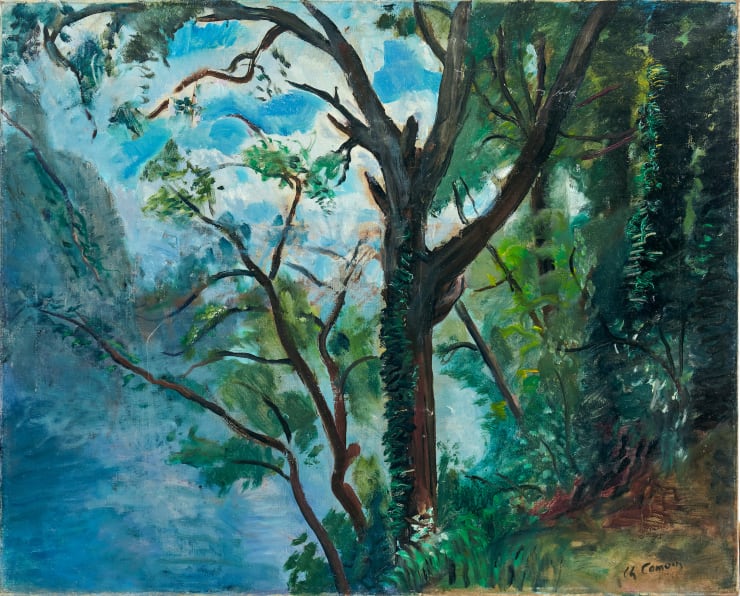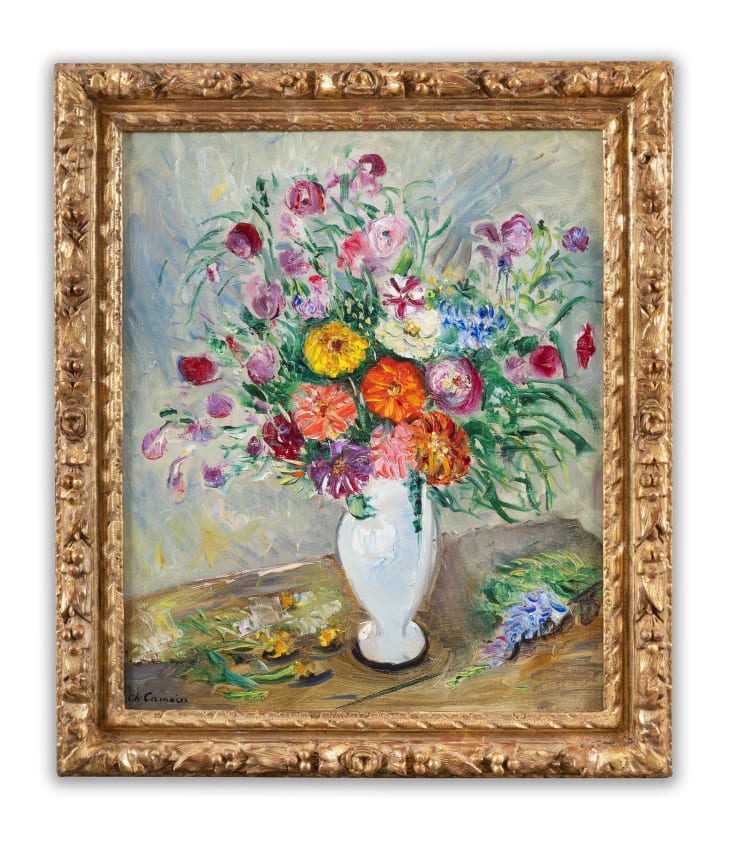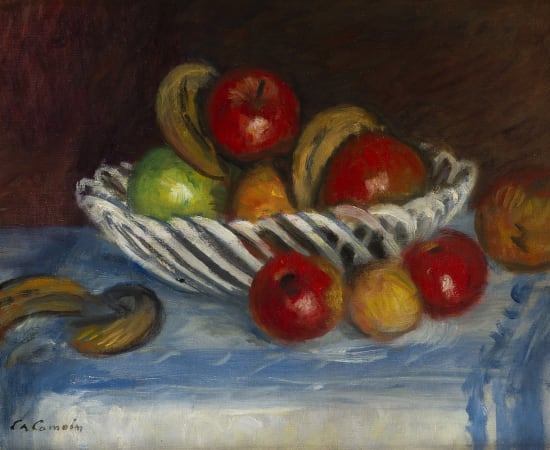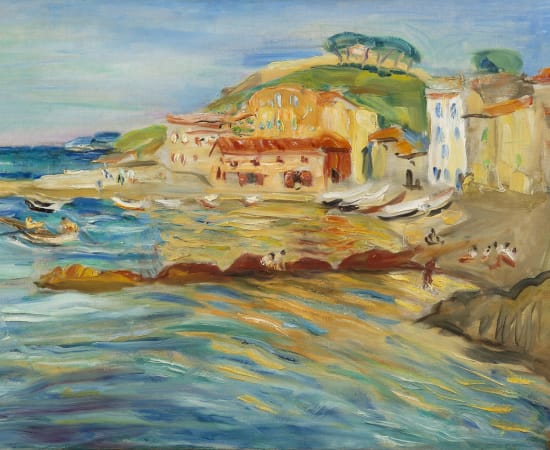Charles Camoin (1879-1965) French
Works
Biography
Fauve Colorist, Southern Soul, and the Spirit of Modern Provence
At Bailly Gallery, we are dedicated to presenting artists whose innovation shaped the path of modern art. Among them, Charles Camoin holds a distinguished place. A key member of the Fauvist movement and a lifelong advocate of expressive color, Camoin infused his canvases with the warmth and light of the Mediterranean. His work stands as a radiant testament to a uniquely French vision—bridging the academic legacy of Impressionism with the bold freedom of early Modernism.
Born in Marseille in 1879, Camoin studied at the École des Beaux-Arts in Paris, where he became a student of Gustave Moreau—alongside Henri Matisse, Albert Marquet, and Georges Rouault. These young artists would go on to spark a revolution in painting, known as Fauvism, characterized by its unrestrained use of color and emotional immediacy. Camoin, though often more subtle than his contemporaries, played a pivotal role in this radical departure from naturalism.
While Fauvism was short-lived as a movement, Camoin carried its essence throughout his career. His palette remained vibrant, expressive, and deeply tied to the sunlit landscapes of southern France. Whether painting the vivid coastlines of Saint-Tropez, intimate interiors, or softly rendered portraits, Camoin always sought harmony between form and feeling. His art was not only a celebration of color but also of life—a gentle rebellion against rigidity in favor of a more poetic truth.
Camoin was also deeply connected to the legacy of Cézanne, whom he admired and met in 1902. This influence is visible in the structure of his compositions and his deep engagement with light, volume, and space. Yet Camoin’s voice was entirely his own—his brushwork more lyrical, his scenes more fluid and sensuous. A friend to both Matisse and Marquet, Camoin maintained a strong but independent position within the French avant-garde.
Over the decades, Charles Camoin built a rich and consistent body of work that earned the respect of critics and collectors alike. His paintings are held in major institutions such as the Musée d’Art Moderne de Paris, the Centre Pompidou, and the Musée d’Orsay, as well as in esteemed private collections around the world.
At Bailly Gallery, where tradition meets connoisseurship, we recognize in Camoin an artist of enduring relevance—an emotional colorist whose works echo with the timeless light of Provence and the early fires of Modernism. His art offers collectors a unique synthesis of Fauvist vitality and Mediterranean serenity: a window into one of France’s most poetic artistic voices.
At Bailly Gallery, we are dedicated to presenting artists whose innovation shaped the path of modern art. Among them, Charles Camoin holds a distinguished place. A key member of the Fauvist movement and a lifelong advocate of expressive color, Camoin infused his canvases with the warmth and light of the Mediterranean. His work stands as a radiant testament to a uniquely French vision—bridging the academic legacy of Impressionism with the bold freedom of early Modernism.
Born in Marseille in 1879, Camoin studied at the École des Beaux-Arts in Paris, where he became a student of Gustave Moreau—alongside Henri Matisse, Albert Marquet, and Georges Rouault. These young artists would go on to spark a revolution in painting, known as Fauvism, characterized by its unrestrained use of color and emotional immediacy. Camoin, though often more subtle than his contemporaries, played a pivotal role in this radical departure from naturalism.
While Fauvism was short-lived as a movement, Camoin carried its essence throughout his career. His palette remained vibrant, expressive, and deeply tied to the sunlit landscapes of southern France. Whether painting the vivid coastlines of Saint-Tropez, intimate interiors, or softly rendered portraits, Camoin always sought harmony between form and feeling. His art was not only a celebration of color but also of life—a gentle rebellion against rigidity in favor of a more poetic truth.
Camoin was also deeply connected to the legacy of Cézanne, whom he admired and met in 1902. This influence is visible in the structure of his compositions and his deep engagement with light, volume, and space. Yet Camoin’s voice was entirely his own—his brushwork more lyrical, his scenes more fluid and sensuous. A friend to both Matisse and Marquet, Camoin maintained a strong but independent position within the French avant-garde.
Over the decades, Charles Camoin built a rich and consistent body of work that earned the respect of critics and collectors alike. His paintings are held in major institutions such as the Musée d’Art Moderne de Paris, the Centre Pompidou, and the Musée d’Orsay, as well as in esteemed private collections around the world.
At Bailly Gallery, where tradition meets connoisseurship, we recognize in Camoin an artist of enduring relevance—an emotional colorist whose works echo with the timeless light of Provence and the early fires of Modernism. His art offers collectors a unique synthesis of Fauvist vitality and Mediterranean serenity: a window into one of France’s most poetic artistic voices.
Enquire









